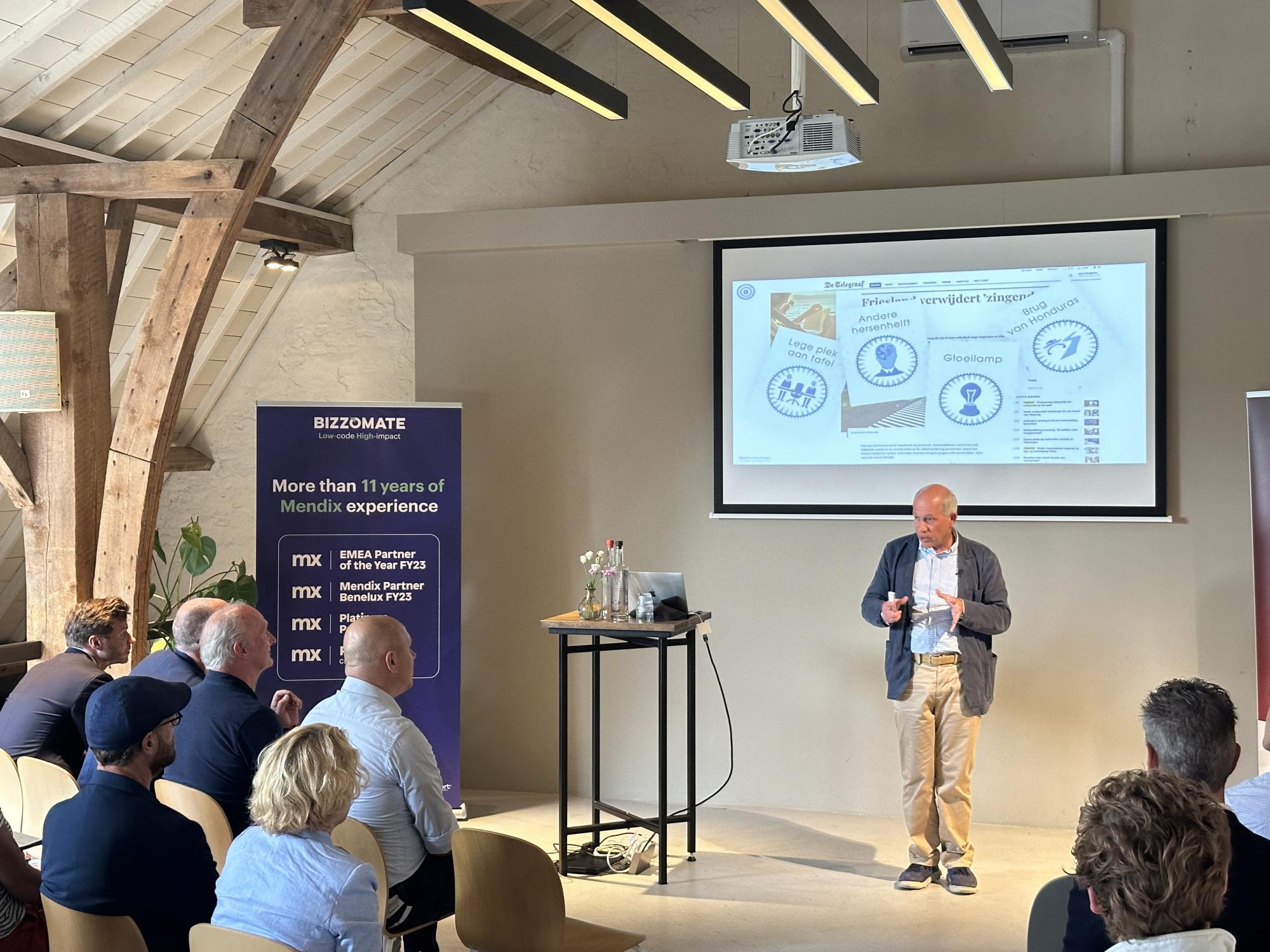Here are the five main conclusions of automation in healthcare
22 May 2024 • News

More time for clients and less time for administration; this is the greatest wish of many caregivers. Automation can make an important contribution to this, but how do you do it successfully? And how do you prevent digitalization projects from failing before they add real value to the workforce? These questions were the focus of the seminar“Automation in Healthcare,” organized in partnership with RPA vendor Tacstone Technology and Mendix. The main conclusion: clear project objectives and timely recognition of signals that a project is in danger of failure are essential for successful healthcare automation.
Clear Project Objectives and Guts
In healthcare, many processes get mixed up, leading to a vicious cycle of inefficiency. Marc Gelissen emphasizes, “In healthcare automation projects, clear project objectives are indispensable. They provide direction and focus, allowing team members to know exactly what is expected of them. In addition, you have to encourage the team to take risks for the success of the project. Showing guts should reward you for finding innovative solutions that make the healthcare project succeed.”
Recognizing Patterns of Failure
Paul Iske, professor of Individual & Organizational Learning at Maastricht University, has spent years researching failed projects. He identified 18 archetypes of failure patterns. “Teams only learn from projects when they don’t go as expected. Share failure stories within the organization to learn from them. This way you will recognize patterns and prevent your automation project from failing,” Iske said.
The Added Value of Digitalization
Sander Terhorst, Senior Manager at Tacstone Technology, believes that automation is only successful if people see the added value it brings. “Even in healthcare, solutions are only used when the added value is clear. This remains true even with the rise of AI. Think of AI as complementary intelligence that can increase the impact of automation, provided its added value is recognized,” Terhorst states.
Usability is Crucial
Gerbrand van de Beek, Chief Digital Officer at Mental Care Group, emphasizes the importance of usability. “Client portals should invite interaction and provide clients with insight into their treatment journey in a user-friendly way. Only with sufficient emphasis on usability can clients be optimally supported, allowing the automation solution to add real value.”
Buy or Build Software?
Choosing between buying software or developing custom solutions is a strategic choice that determines the success of automation projects. Charles Bronzwaer, partner at Bizzomate and low-code pioneer, explains: “Purchased applications must fit seamlessly with the healthcare institution’s work processes. Custom low-code applications can fully support specific work processes, significantly reducing the chance of failure.”
Conclusion
Automation can help caregivers free up more time for clients by reducing administrative burdens, provided the projects are implemented properly. Successful automation requires clear project goals, timely recognition of failure patterns, innovation and risk appetite within the team, and choosing the right software that best fits the work processes. Only this approach fully exploits the added value of automation in healthcare.




